11 Sharks You Won’t Believe Are Harmless To Humans
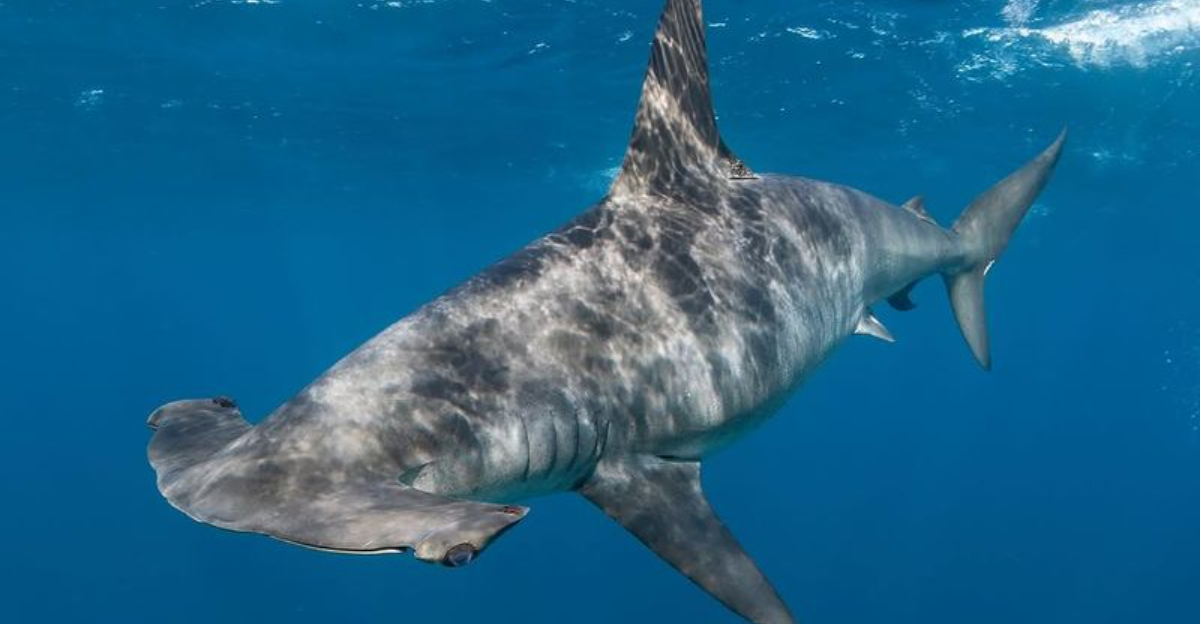
When you think of sharks, you might imagine fearsome predators lurking beneath the ocean’s surface. However, not all sharks fit this terrifying image.
In fact, many shark species pose no threat to humans and are fascinating creatures in their own right.
1. Spotted Ragged-tooth Shark
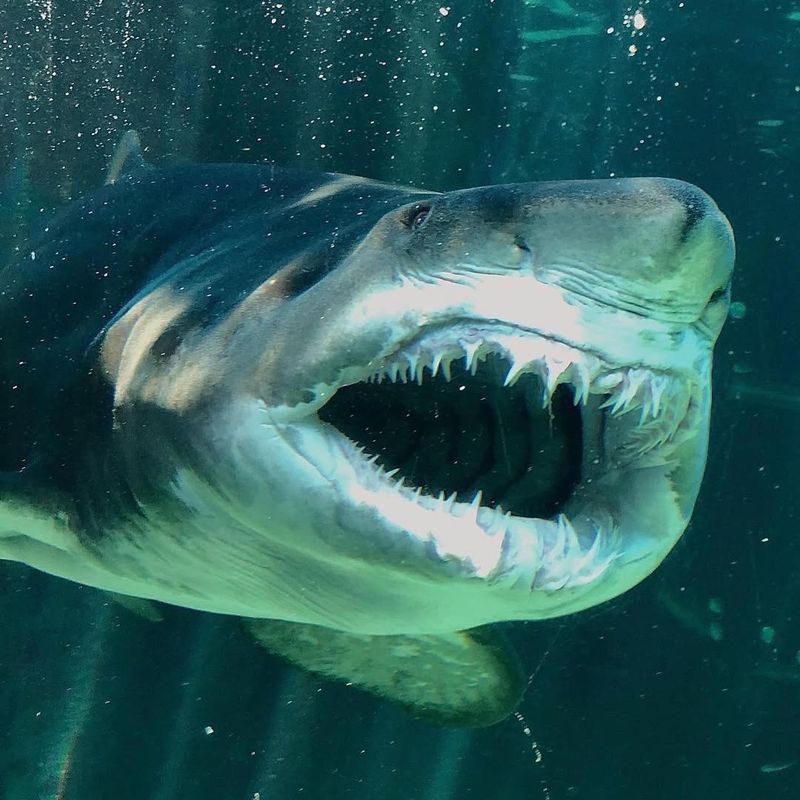
This one is often mistaken for its more aggressive relatives, but it’s actually a gentle creature that glides through the ocean with grace. Known for its jagged yet harmless teeth, this shark is easily recognized by the spots adorning its sturdy body.
These sharks are primarily found in the warm waters of the Indian and Pacific Oceans. They prefer to dwell near coral reefs, where they feed on small fish and crustaceans. Despite their somewhat fearsome appearance, they pose no threat to humans.
2. Wobbegong Shark
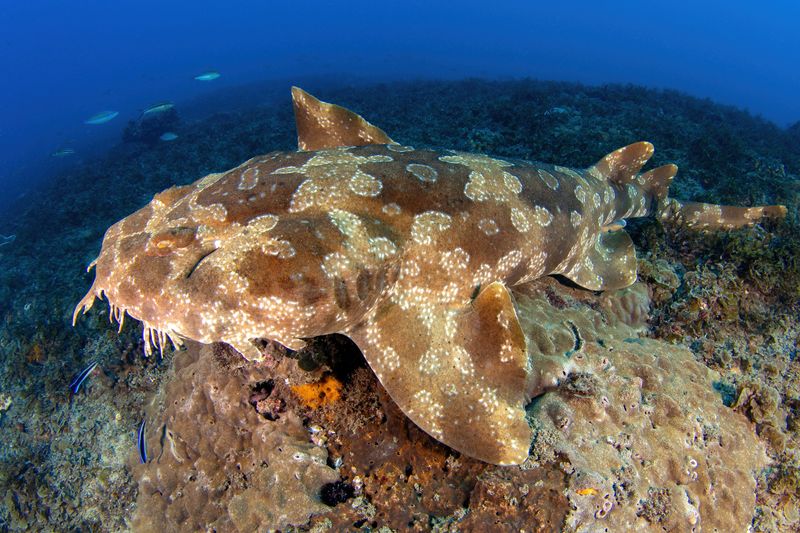
The wobbegong shark, often referred to as the “carpet shark,” is known for its extraordinary ability to blend into its surroundings. Found in the shallow waters of the Indo-Pacific, this shark’s ornate skin pattern provides perfect camouflage against the ocean floor.
Wobbegongs are ambush predators, relying on their stealth to capture prey such as fish and crustaceans. However, they are not aggressive towards humans and usually lie still, undisturbed by divers and swimmers.
3. Nurse Shark
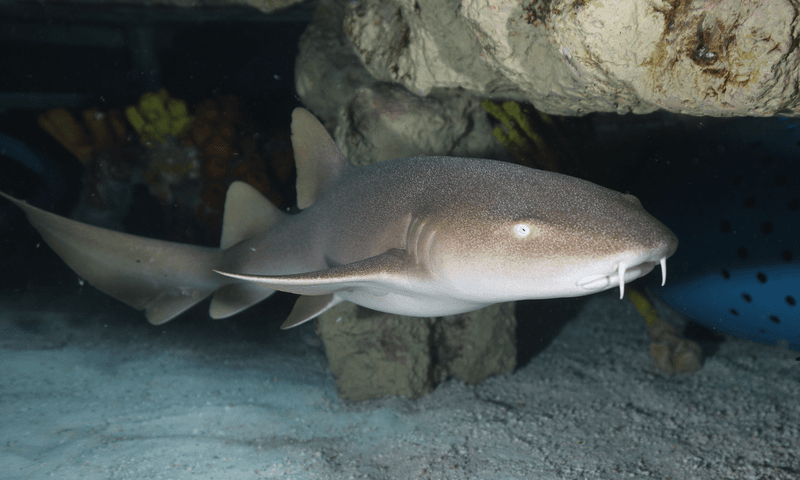
This is a common inhabitant of warm, shallow waters, where it often rests motionless on the ocean floor during the day. With its sluggish nature and preference for a benthic lifestyle, the nurse shark poses no danger to humans.
Equipped with small, rounded fins and a stout body, nurse sharks feed primarily on fish, shrimp, and crustaceans. They are known for their ability to remain stationary for long periods, using their unique method of pumping water over their gills to breathe.
4. Leopard Shark
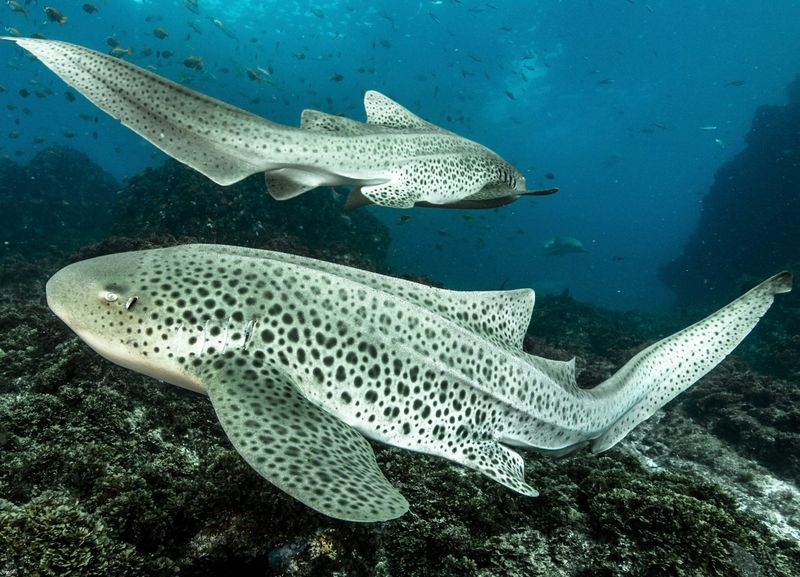
This shark is a small, slender species known for its striking pattern of dark spots and saddle-like markings. Found in the coastal waters of the eastern Pacific Ocean, these sharks are often seen gliding gracefully over sandy bottoms.
Leopard sharks primarily feed on small fish, crabs, and other invertebrates, using their pointed snouts to root out prey hidden beneath the sand. Their diet and behavior mean they are of no threat to humans, and they are a common sight for divers and beachgoers.
5. Whale Shark
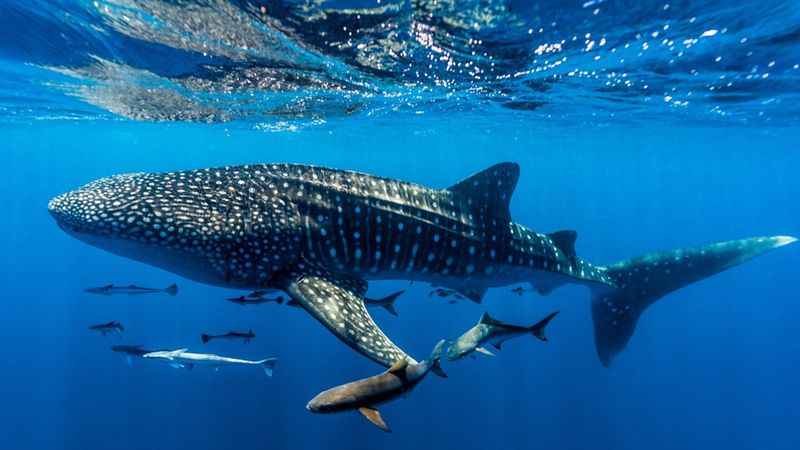
This is the largest fish in the ocean, but don’t let its size intimidate you. Despite its massive stature, this gentle giant feeds on tiny plankton and poses no threat to humans. Its distinctive pattern of white spots and stripes makes it easily recognizable to divers and snorkelers alike.
Whale sharks are found in warm, tropical oceans and are a favorite sight for marine enthusiasts. They glide gracefully through the water, filter-feeding by opening their enormous mouths to capture plankton, fish eggs, and small fish.
6. Smooth Hammerhead Shark
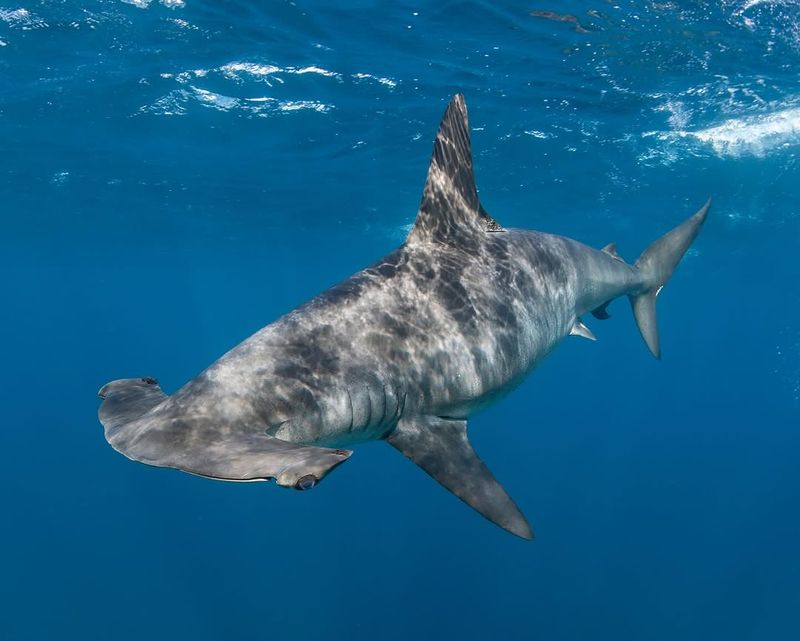
This one is an intriguing species, easily recognized by its wide, flat head. Unlike its cousins, the great hammerheads, this shark is relatively small, reaching only about 13 feet in length. It prefers cooler waters, often found around the shores of New Zealand and South Africa.
Despite its intimidating appearance, the smooth hammerhead is non-aggressive towards humans. It feeds primarily on bony fish and small cephalopods, using its uniquely shaped head to pin down prey.
7. Angel Shark
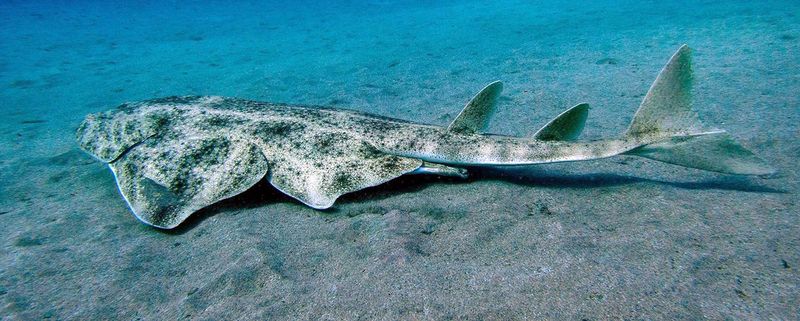
The angel shark is a master of disguise, often mistaken for a ray due to its flat body and broad pectoral fins. Found in temperate and tropical waters, this bottom-dwelling shark uses its excellent camouflage to ambush prey.
Despite its predatory tactics, the angel shark is harmless to humans. It spends much of its time buried in the sand, waiting for unsuspecting fish or invertebrates to pass by.
8. Zebra Shark
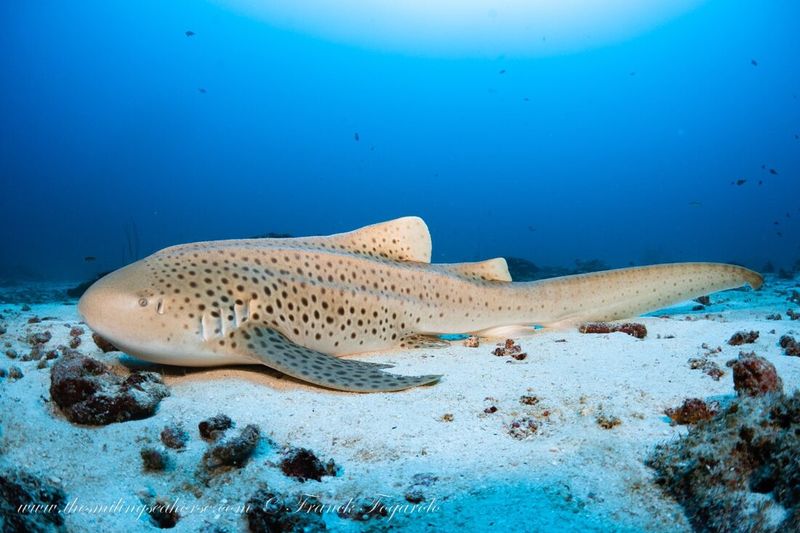
Such beauty, such grace, am I right? The zebra shark is a curious and friendly species found in the warm waters of the Indo-Pacific. As juveniles, their bodies are adorned with dark stripes, similar to a zebra’s, which fade into spots as they mature.
Zebra sharks are known for their docile nature and are often seen resting on the ocean floor during the day. At night, they become more active, using their long tails to navigate through coral reefs in search of prey such as mollusks and crustaceans.
9. Goblin Shark
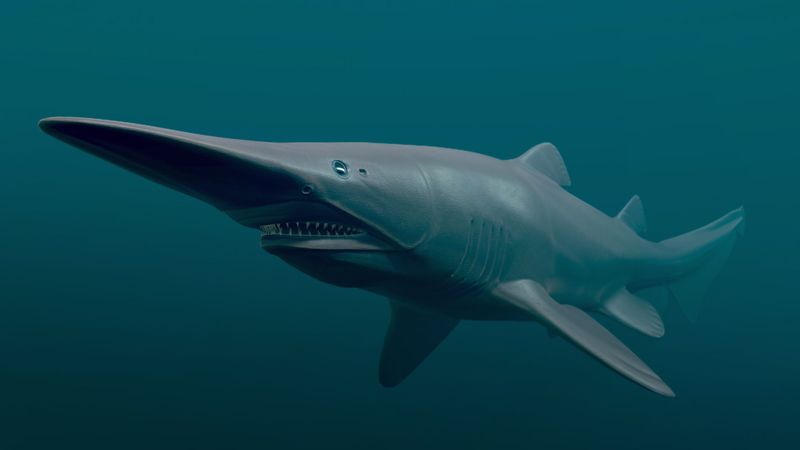
The goblin shark is one of the ocean’s most mysterious and rarely seen creatures. Known for its unusual appearance, this deep-sea dweller has an elongated snout and protruding jaws that set it apart from other sharks.
Despite its fearsome look, the goblin shark is harmless to humans. It inhabits the depths of the ocean, far from where people swim or dive, and its diet consists mainly of deep-sea fish and squid.
10. Basking Shark
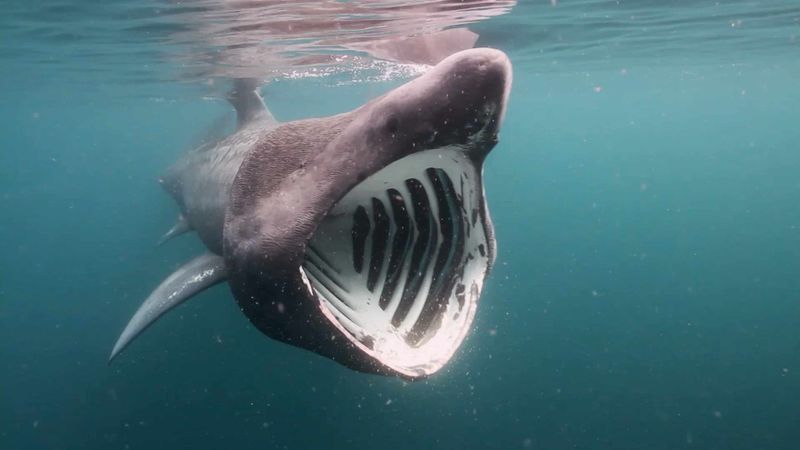
Basking shark is the second-largest fish in the sea, second only to the whale shark. Known for its enormous mouth, this gentle behemoth also feeds on plankton. It cruises the ocean with its mouth agape, filtering tiny organisms from the water.
Despite its intimidating size and gaping jaw, the basking shark is completely harmless to humans. It prefers the cooler waters of the northern hemisphere and often swims close to the surface, making it a common sight for sailors and marine watchers.
11. Hammerhead Shark
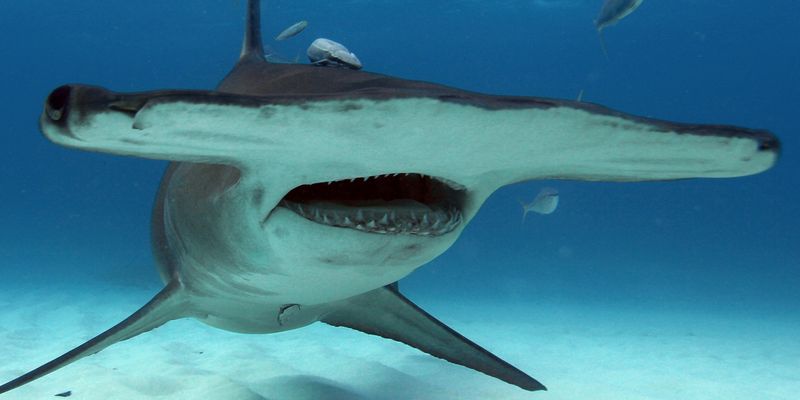
Hammerhead Sharks are instantly recognizable due to its unique head shape, which resembles a hammer. This distinctive feature is believed to enhance their ability to find prey, but it also gives them a curious and almost comical appearance.
Found in warm coastal waters around the world, hammerhead sharks are generally non-aggressive towards humans. They prefer to feed on fish, octopuses, and crustaceans, using their wide-set eyes for a better field of view.






